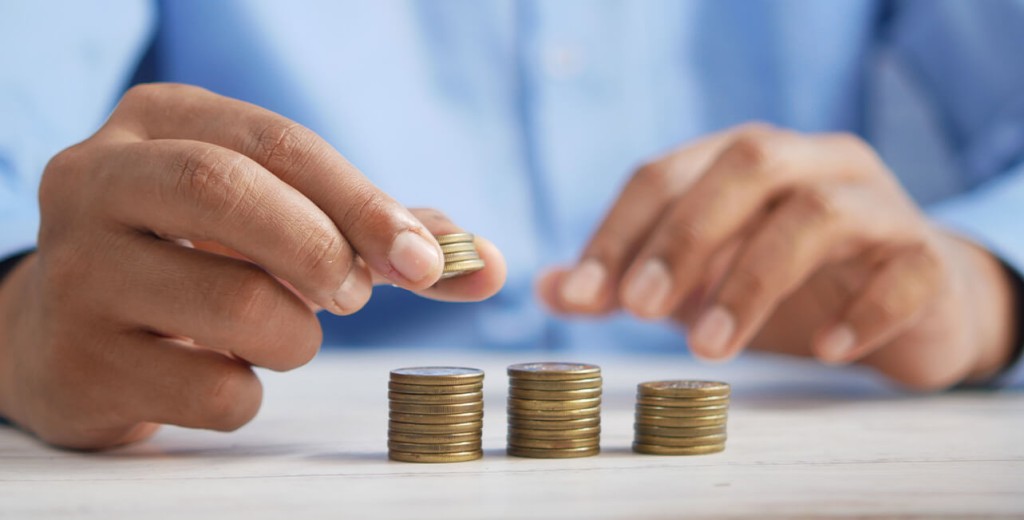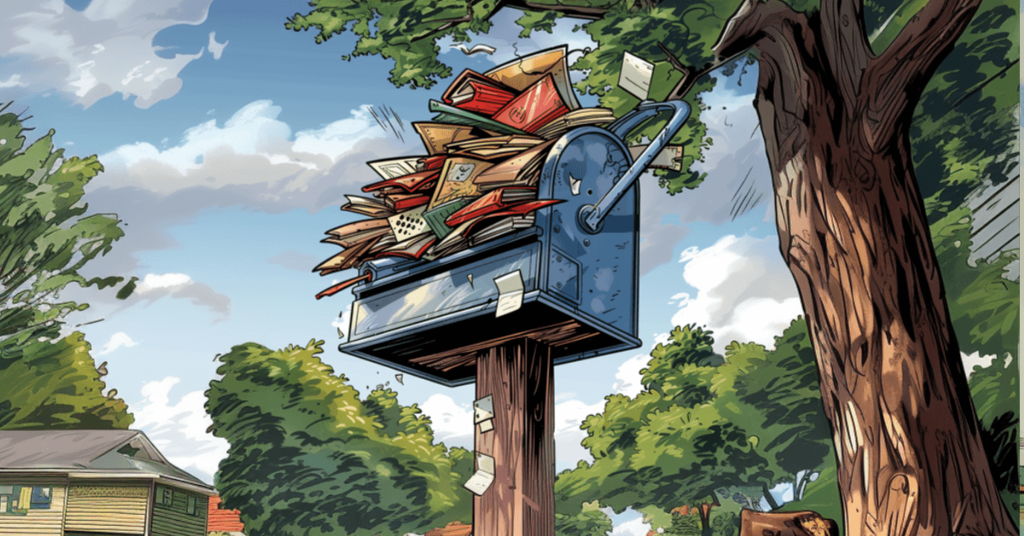Have you accumulated a lot of unfavorable loans that have become an annoying thorn in your side? And even if you know very well what kind of life you really want, can't quite figure out how to get rid of debt as quickly as possible?
In this article, you will get 9 ideas on how to pay off debt quickly.
- 1. Create a simple budget
- 2. Organize the debt
- 3. Keep an eye on your finances every month
- 4. Put any money you have left over to pay off debt
- 5. Sell things you don't need to pay off debt
- 6. Find cheaper alternatives on products and services
- 7. Refinance debt
- 8. Increase your income
- 9. Promise yourself that you will succeed
1. Create a simple budget
The very first thing you have to do is to get yourself an overview. That means goodbye to mailbox fear if you have it - because here you actually have to dare to look the situation in the eye. That's the only way the situation gets better.
To create a budget is the best way to get started properly if you want to get rid of the debt.
I have created a template to make the job a little easier for you, and which can give you a good start. You can download the budget template for free here.
A budget will help you figure out how much money you have coming in each month, and how much of this can go towards paying off debt. In addition, you will be able to see what you spend an unnecessary amount of money on, cut these costs, and have more to use for debt payment.
Do you drink a lot of soft drinks and eat crisps every day? Do you smoke? Well, these are obvious places you need to make a change.
Stopping this is something you simply have to do if you are to succeed in paying off your debt.
So - knowing what your monthly expenses and income are is therefore absolutely crucial.
2. Organize the debt

If you want to pay off the debt as quickly as possible, this step is critical. If you have many loans of different sizes, you can consider using a method called thesnowball method.
This is that method Harward Business Review concluded was the most effective method people used to pay off debt.
The snowball method looks like this:
- Make an overview of your debts and rank them by size.
- Then pay the minimum amount on all the debts, with the exception of the smallest debt.
- Then pay in full, or as much as you can, on the smallest debt.
If you use this method, you take the money you have left after you have paid all the installments and pay off the smallest debt item.
For example, if you have $70 left after paying all the minimum amounts on the larger debt items, and the smallest debt has a minimum amount of $20, you pay the entire $70 every month to the smallest debt is gone.
Then you do the same thing again with the next debt item - hence the snowball effect.
Important: It is important to pay the minimum amounts on the other debts as well, in order not to receive payment notices and collection claims on them.
This is a method that is both very effective and, not least, motivating, as after paying off the first bill you can be left with a feeling that you have regained control of your finances.
Examples of the type of debt you should list
- Credit card debt
- Consumer loans
- Car loan
- Personal loans
Other important things to remember is the interest rate on your loan. It may be a good idea to pay off the most expensive debt first. If one of your larger loans has a higher interest rate than the smaller ones, it may therefore be more advantageous to pay this off as soon as you can.
At the same time, there is a lot of psychology involved here, and the sense of accomplishment of getting rid of one of the smaller loans can also give you momentum, so that you really tackle the larger debt items as well.
Compound interest can be your best friend when it comes to investing - but your worst enemy when it comes to debt. Many people are probably not aware of how much money actually goes to the interest payments on a loan.
With the snowball method, you get rid of many small loans quickly, which also means you have fewer loans. And seeing loans disappear from your list will feel really good for you to see.
And last but not least, when the time comes to deal with the larger loans, you will have some extra money to pay off, since all the small loans have been paid!
This means that you can pay off the larger debt items faster than if you had started with these.
3. Keep an eye on your finances every month
Keeping track of how your finances are doing on a monthly basis is key to getting out of debt quickly. The money you have must have a definite purpose, and you cannot deviate from this.
Not thinking twice before going to the store and buying that extra chocolate, only to wonder where your money has gone, is not an option anymore!
Get an overview of your transactions in the online bank and stick to the budget you have set.
List your income at the top and your expenses at the bottom. Maybe you see that you have a little extra money left over this month, since you didn't buy that chocolate?
You may be surprised at how much money is lost to those small buys.
By keeping a close eye on your monthly transactions, you can find out which unnecessary expenses you have.
Also check out: How to improve your credit score
4. Put any money you have left over to pay off debt

Do not forget this one!
If you suddenly have more money in your hands, you should pay down more of your debt. Then you get rid of it even faster.
Yes, I understand that it seems tempting to have a small celebration at a restaurant or the like if extra money has come in, and you have persevered and been good at paying off the debt up until now. I see that you may think that you deserve something for the effort.
But...…
If you're really set on getting out of debt fast, you must be disciplined. Disciplined enough to use any extra capital to pay off the debt.
Like all the steps above, this is also an important step in getting out of debt quickly. This is where you can really build momentum!
In fact, you may have received – or will receive – extra money that you can use to pay off debt:
- If you have received a tax refund
- Bonus from work
- Half tax on wages in November or December (if applicable in your country)
- Working extra hours
- A second job
- Vacation money
- Money from things you have sold
- Money gifts you receive
- Money others owe you
As you can see, it is possible that you will receive something extra soon. But promise yourself to be disciplined and pay off the debt. Imagine what life will be like debt free.
That should be plenty of motivation, right?
5. Sell things you don't need to pay off debt
It is likely that you have things in the house that you can sell - whether you want to or not. Again, remember that if you sell things you don't really need, you'll pay off your debt faster.
Do you own a fairly new car, for instance?
Then you can consider selling it and buying a cheaper car. You can also see if you really need a car? Is it possible to take the bus, tram and train?
Regardless of whether you buy a cheaper car or decide to use public transport, you can save many, many thousands here.
Thousands that can pay off debt.
It's wise to be honest with yourself and decide what you must have and what you really don't need.
For example: You don't need a new Tesla. You need a vehicle that gets you from a to b.
Again, if you really want to get out of debt as quickly as possible, this is something that can help you on your way.
That means trading in your Tesla for an older Jeep instead.
Other things you can sell
It's not just cars that you can sell to make extra money. You can sell:
- Clothes
- Playstation, Xbox, TV and other entertainment systems
- Musical instruments
- Gardening tools
So, start rummaging through the drawers. Maybe you'll find something you didn't realize had value.
Register a user at eBay and start selling your things there. You can also invite friends and family to yard sales, where you collect everything you are going to sell and try to sell as much as you can.
6. Find cheaper alternatives on products and services
Here you can save a lot of money and get as much out of your budget as possible. The stores, for example, have their own brands, which are often cheaper than more well-known brands.
A useful thought exercise is to look at your budget, check the expenses you have, and ask yourself:
How can I make this cheaper?
By doing this, you increase the chance that you will start to look more closely at the prices of the different products in the store, and choose the cheaper options.
Not least you have comparison services. I work for the comparison service Tjenestetorget (Norwegian service) myself, and have myself interviewed people who have saved a lot of money on this service - so this I know you can save a lot on.
My best tip: Don't sacrifice everyday pleasures!

You don't have to cut back on café visits, chocolate and other small expenses that bring you joy. Rather, use comparison services such as Tjenestorget to get a better price on the necessary expenses in everyday life. You can save tens of thousands in a few minutes of work!
Examples of things you can compare offers on:
- Insurance
- Electricity
- Mobile subscription
- Broadband/internet
- TV packages
You can do the same things with things that aren't necessarily as expensive too, for example:
- Get your hair cut at a less expensive place
- Eliminate restaurant visits until the debt is gone
- End subscriptions you don't need
You may be surprised by how much you can actually save, so get an offer yourself here.
7. Refinance debt
Although I am personally very enthusiastic about the snowball method, there is no getting away from the fact that debt refinancing can also make sense if you have several loans with very high interest rates.
Do you have a very high interest rate on your credit card debt, lack an overview and generally have poor terms on the existing loan? Then combining all the debt into one loan with a lower interest rate will potentially save you thousands of kroner, since you can get better interest rates and lower monthly costs.
It is much more viable to pay off a loan with, say, 5 percent interest than 20 percent, and will definitely give you the opportunity to pay off debt faster.
8. Increase your income

This is such an elementary step that many people actually forget to think about it. Look for ways to increase your income!
And here we are mainly talking about finding an input source that is fixed. This could be, for example, getting a job, negotiating a higher salary with your current employer, changing jobs, or having a secondary job.
Try to find as many opportunities to earn extra income as you can! I have written an article about getting extra income, which you can check out here.
Just make sure not to increase your expenses if you get an extra income. It will go towards paying off the debt!
9. Promise yourself that you will succeed
And finally: you can do this!
Use all your discipline and motivation to pay off your debt. If you've read this far, I know you're ready to commit to becoming debt free.
Should you become demotivated and tired, you can read other people's success stories. Other people who have managed to get rid of debt and turn their lives around.
You can also make a list of what you want to do on the day you are debt free. Write down why it is important for you to get out of debt, and read it often to remind yourself where you were and what you wanted out of.
I root for you.
Disclaimer
The steps in this article are not intended as concrete advice, and should only be seen as information about general and well-known ideas on how to pay off debt.





